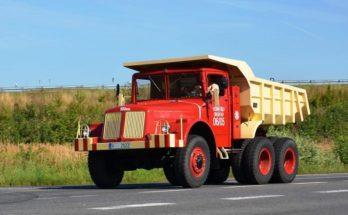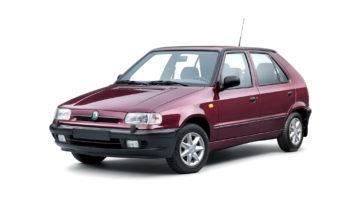The Volvo PV444 represented a new beginning after World War II, as well as a symbol of the Volvo car company, while at the same time starting the export of the Volvo brand to the US. On September 1, we will commemorate the 70th anniversary of its ceremonial premiere with the royal presence.
On the first day of September 1944, the exhibition opened, which became a major milestone in the history of the development of the Volvo car company. This exhibition was held at the newly opened Royal Tennis Hall in Stockholm .
Although the war was still raging outside, Volvo looked to the future in peace, which soon after came true. The purpose of the exhibition was the presentation of 18 years of activity of the Volvo car company, as well as the presentation of current products and projects designed for peacetime.
This exhibition covered the entire Volvo Group and visitors could see everything from tanks to grinding machines – as well as two new Volvo models: the PV60 and PV444 . In the customer magazine Ratten, the two cars were nicknamed "Volvo's doves of peace".
The PV60 still had a pre-war design as it was originally scheduled to debut in 1940 – but World War II temporarily prevented this debut due to the suspension of virtually all Volvo civilian car production.
The biggest star of the exhibition at the Royal Tennis Hall was undoubtedly the PV444 "little Volvo". Visitors lined up to catch a glimpse of this car. Although what they saw was still only a non-roadable prototype.
When the PV444 was introduced in September 1944, development work was still in its infancy and production was still a few years away. About forty designers worked on the development of the new car. First, a 1:1 scale wooden model was created, which was painted black and given silver paint where the windows were supposed to be. This prototype was completed in March 1944, when it was shown to the founders of the Volvo car company, Assar Gabrielsson and Gustaf Larson . After a cursory inspection of the car, the two gentlemen made a decision that affected the future of the entire Volvo car company – they agreed to manufacture the car.
During and shortly after the show, 2,300 sales contracts for the PV444 were signed. But at that time there was still a lot of time left before the ordered cars were handed over. Over the following years, intensive testing of prototype vehicles took place and the final version was only approved on February 3, 1947, after which series production began the following month.
The PV444 was not only Volvo's first small car. It was also the first model with a self-supporting body . The four-cylinder engine of this car received a completely new design, which also included the premiere use of OHV valve train in a passenger car. The engine displacement was 1.4 liters and the first version had 40 horsepower. The entire so-called A series of the PV444 model was painted with black paint with an admixture of cellulose and metal particles that created the effect of green reflections.
Notable visitors to the grand opening of the exhibition on 1 September 1944 included: Prime Minister Per Albin Hansson , Crown Prince Gustaf Adolf , Princesses Carl and Eugen , and Prince Carl Johan , uncle of King Carl XVI Gustaf. These prominent guests were personally welcomed by the company's founders themselves, Assar Gabrielsson and Gustaf Larson.
During the ten days of its duration, the exhibition recorded the participation of 148,437 visitors. Queues of curious people stretched out of the Tennis Hall along the entire length of Lidingövägen. A raffle for one PV444 car was held daily among visitors to the exhibition. Everyone who had a registered phone number in Stockholm got a free ticket. However, there were also many paying visitors who bought a ticket for one crown. The entire revenue from ticket sales was donated to the humanitarian organization Red Cross .
By the time the PV60 and PV444 were introduced, Volvo had only modest exports. At the time, Ratten magazine wrote that these cars could "… bring joy to many people in Sweden and, after peace, could also become an export item." But it was the Volvo PV444 that gave Volvo the most important export market in history: the United States American. On August 15, 1955, the first test shipment of PV444 cars arrived in Los Angeles . A year later, Volvo established itself as the second largest car import brand to California .
Originally, eight thousand PV444s were expected to be produced, which was quite an ambitious target for a brand that had never produced more than two thousand units of a single model up to that point. But the "little Volvo" hit the market in an unprecedented way. By 1958, nearly 200,000 PV444 cars had been produced. If we also include in this list the modernized version PV544 , which rolled off the production line until October 1965, then the total number of cars produced was exactly 440 thousand; of these, 160,000 were exported abroad and 280,000 were sold directly in Sweden.
Source: Volvo



